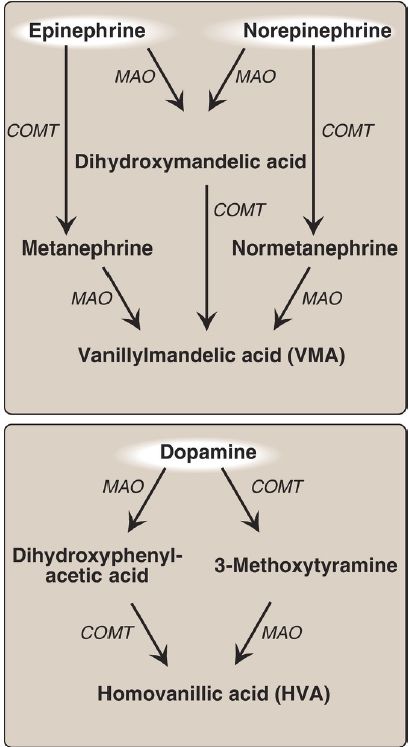

النبات

مواضيع عامة في علم النبات

الجذور - السيقان - الأوراق

النباتات الوعائية واللاوعائية

البذور (مغطاة البذور - عاريات البذور)

الطحالب

النباتات الطبية


الحيوان

مواضيع عامة في علم الحيوان

علم التشريح

التنوع الإحيائي

البايلوجيا الخلوية


الأحياء المجهرية

البكتيريا

الفطريات

الطفيليات

الفايروسات


علم الأمراض

الاورام

الامراض الوراثية

الامراض المناعية

الامراض المدارية

اضطرابات الدورة الدموية

مواضيع عامة في علم الامراض

الحشرات


التقانة الإحيائية

مواضيع عامة في التقانة الإحيائية


التقنية الحيوية المكروبية

التقنية الحيوية والميكروبات

الفعاليات الحيوية

وراثة الاحياء المجهرية

تصنيف الاحياء المجهرية

الاحياء المجهرية في الطبيعة

أيض الاجهاد

التقنية الحيوية والبيئة

التقنية الحيوية والطب

التقنية الحيوية والزراعة

التقنية الحيوية والصناعة

التقنية الحيوية والطاقة

البحار والطحالب الصغيرة

عزل البروتين

هندسة الجينات


التقنية الحياتية النانوية

مفاهيم التقنية الحيوية النانوية

التراكيب النانوية والمجاهر المستخدمة في رؤيتها

تصنيع وتخليق المواد النانوية

تطبيقات التقنية النانوية والحيوية النانوية

الرقائق والمتحسسات الحيوية

المصفوفات المجهرية وحاسوب الدنا

اللقاحات

البيئة والتلوث


علم الأجنة

اعضاء التكاثر وتشكل الاعراس

الاخصاب

التشطر

العصيبة وتشكل الجسيدات

تشكل اللواحق الجنينية

تكون المعيدة وظهور الطبقات الجنينية

مقدمة لعلم الاجنة


الأحياء الجزيئي

مواضيع عامة في الاحياء الجزيئي


علم وظائف الأعضاء


الغدد

مواضيع عامة في الغدد

الغدد الصم و هرموناتها

الجسم تحت السريري

الغدة النخامية

الغدة الكظرية

الغدة التناسلية

الغدة الدرقية والجار الدرقية

الغدة البنكرياسية

الغدة الصنوبرية

مواضيع عامة في علم وظائف الاعضاء

الخلية الحيوانية

الجهاز العصبي

أعضاء الحس

الجهاز العضلي

السوائل الجسمية

الجهاز الدوري والليمف

الجهاز التنفسي

الجهاز الهضمي

الجهاز البولي


المضادات الميكروبية

مواضيع عامة في المضادات الميكروبية

مضادات البكتيريا

مضادات الفطريات

مضادات الطفيليات

مضادات الفايروسات

علم الخلية

الوراثة

الأحياء العامة

المناعة

التحليلات المرضية

الكيمياء الحيوية

مواضيع متنوعة أخرى

الانزيمات
Catecholamines
المؤلف:
Denise R. Ferrier
المصدر:
Lippincott Illustrated Reviews: Biochemistry
الجزء والصفحة:
14-11-2021
2664
Catecholamines
Dopamine, norepinephrine (NE), and epinephrine (or, adrenaline) are biologically active (biogenic) amines that are collectively termed catecholamines. Dopamine and NE are synthesized in the brain and function as neurotransmitters. Epinephrine is synthesized from NE in the adrenal medulla.
1. Function: Outside the CNS, NE and its methylated derivative, epinephrine, are hormone regulators of carbohydrate and lipid metabolism. NE and epinephrine are released from storage vesicles in the adrenal medulla in response to fright, exercise, cold, and low levels of blood glucose. They increase the degradation of glycogen and triacylglycerol as well as increase blood pressure and the output of the heart. These effects are part of a coordinated response to prepare the individual for stress and are often called the “fight-or-flight” reactions.
2. Synthesis: The catecholamines are synthesized from tyrosine, as shown in Figure 1. Tyrosine is first hydroxylated by tyrosine hydroxylase to form L-3,4-dihydroxyphenylalanine (DOPA) in a reaction analogous to that described for the hydroxylation of phenylalanine . The tetrahydrobiopterin (BH4)-requiring enzyme is abundant in the CNS, the sympathetic ganglia, and the adrenal medulla, and it catalyzes the ratelimiting step of the pathway. DOPA is decarboxylated in a reaction requiring PLP to form dopamine, which is hydroxylated by dopamine β-hydroxylase to yield NE in a reaction that requires ascorbic acid (vitamin C) and copper. Epinephrine is formed from NE by an N-methylation reaction using S-adenosylmethionine (SAM) as the methyl donor .

Figure 1: Synthesis of catecholamines. [Note: Catechols have two adjacent hydroxyl groups.] PLP = pyridoxal phosphate.
Parkinson disease, a neurodegenerative movement disorder, is due to insufficient dopamine production as a result of the idiopathic loss of dopamine-producing cells in the brain. Administration of L-DOPA (levodopa) is the most common treatment, because dopamine cannot cross the blood–brain barrier.
3. Degradation: The catecholamines are inactivated by oxidative deamination catalyzed by monoamine oxidase (MAO) and by Omethylation catalyzed by catechol-O-methyltransferase (COMT) using SAM as the methyl donor (Fig. 2). The reactions can occur in either order. The aldehyde products of the MAO reaction are oxidized to the corresponding acids. The products of these reactions are excreted in the urine as vanillylmandelic acid (VMA) from epinephrine and NE and homovanillic acid (HVA) from dopamine. [Note: VMA and the metanephrines are increased with pheochromocytomas, rare tumors of the adrenal gland characterized by excessive production of catecholamines.]

Figure 2: Metabolism of the catecholamines by catechol-O-methyltranferase (COMT) and monoamine oxidase (MAO). [Note: COMT requires Sadenosylmethionine.]
4. Monoamine oxidase inhibitors: MAO is found in neural and other tissues, such as the intestine and liver. In the neuron, this enzyme oxidatively deaminates and inactivates any excess neurotransmitter molecules (NE, dopamine, or serotonin) that may leak out of synaptic vesicles when the neuron is at rest. MAO inhibitors (MAOI) may irreversibly or reversibly inactivate the enzyme, permitting neurotransmitter molecules to escape degradation and, therefore, both to accumulate within the presynaptic neuron and to leak into the synaptic space. This causes activation of NE and serotonin receptors and may be responsible for the antidepressant action of MAOI.
 الاكثر قراءة في الكيمياء الحيوية
الاكثر قراءة في الكيمياء الحيوية
 اخر الاخبار
اخر الاخبار
اخبار العتبة العباسية المقدسة

الآخبار الصحية















 قسم الشؤون الفكرية يصدر كتاباً يوثق تاريخ السدانة في العتبة العباسية المقدسة
قسم الشؤون الفكرية يصدر كتاباً يوثق تاريخ السدانة في العتبة العباسية المقدسة "المهمة".. إصدار قصصي يوثّق القصص الفائزة في مسابقة فتوى الدفاع المقدسة للقصة القصيرة
"المهمة".. إصدار قصصي يوثّق القصص الفائزة في مسابقة فتوى الدفاع المقدسة للقصة القصيرة (نوافذ).. إصدار أدبي يوثق القصص الفائزة في مسابقة الإمام العسكري (عليه السلام)
(نوافذ).. إصدار أدبي يوثق القصص الفائزة في مسابقة الإمام العسكري (عليه السلام)


















